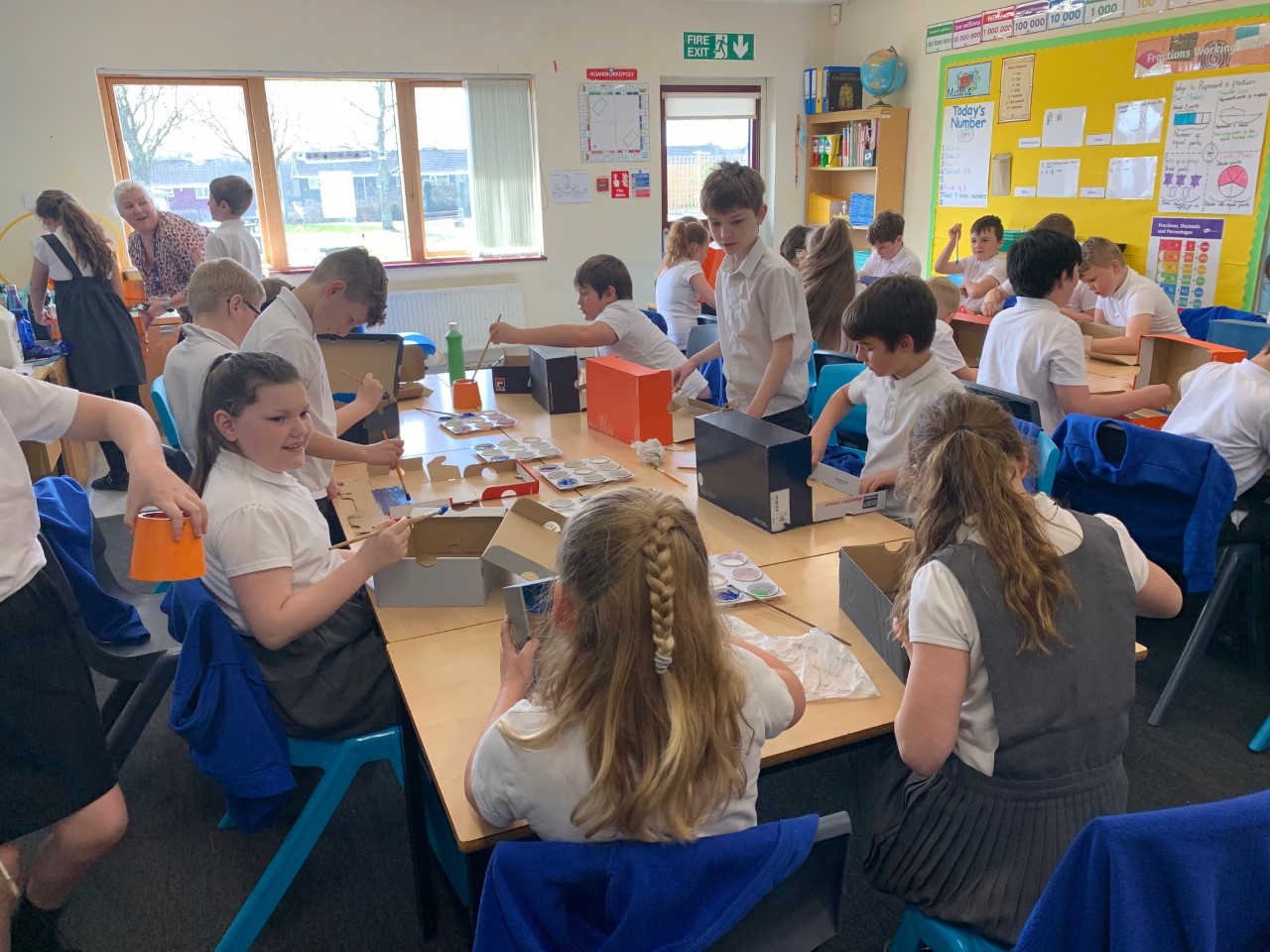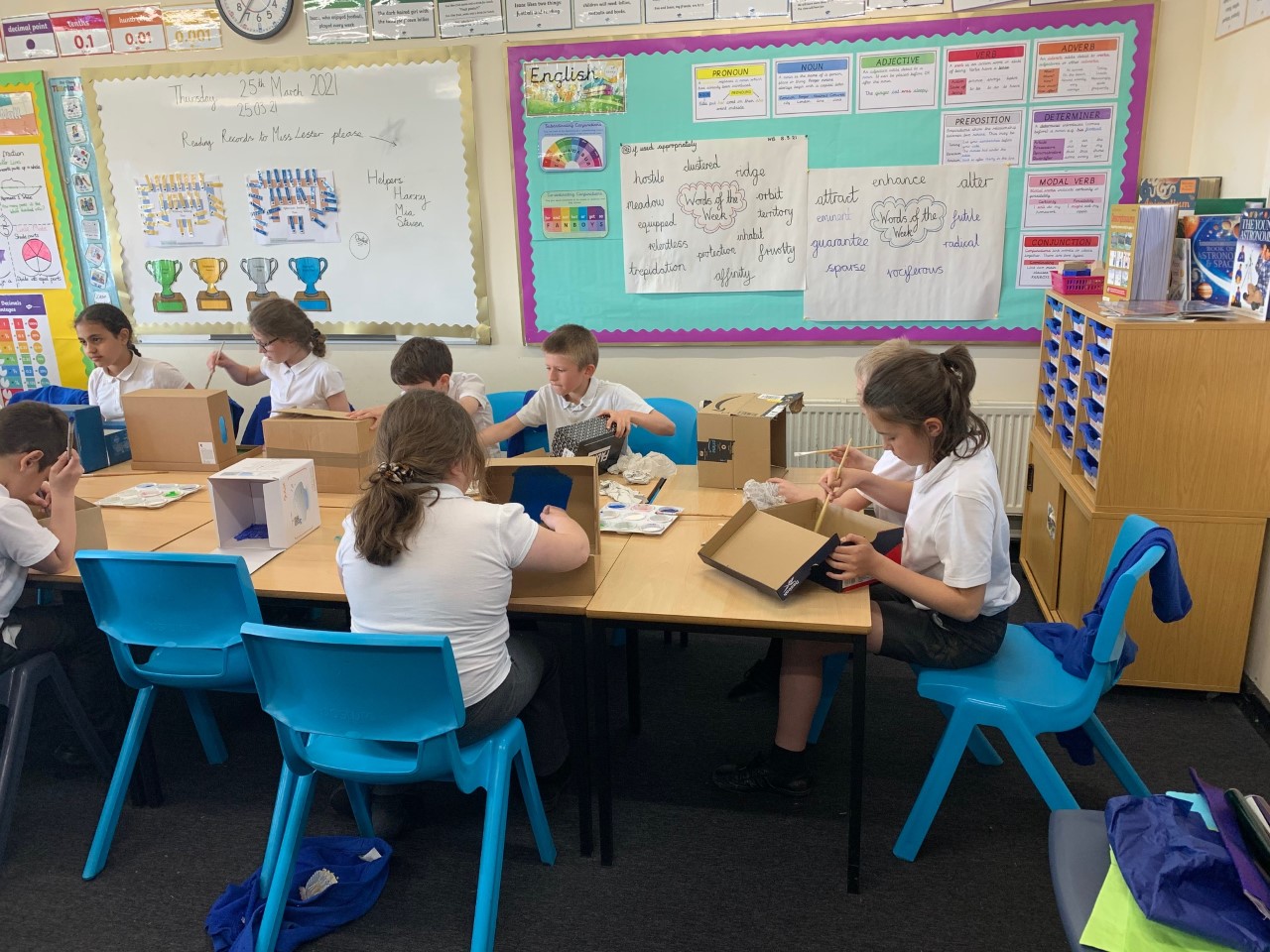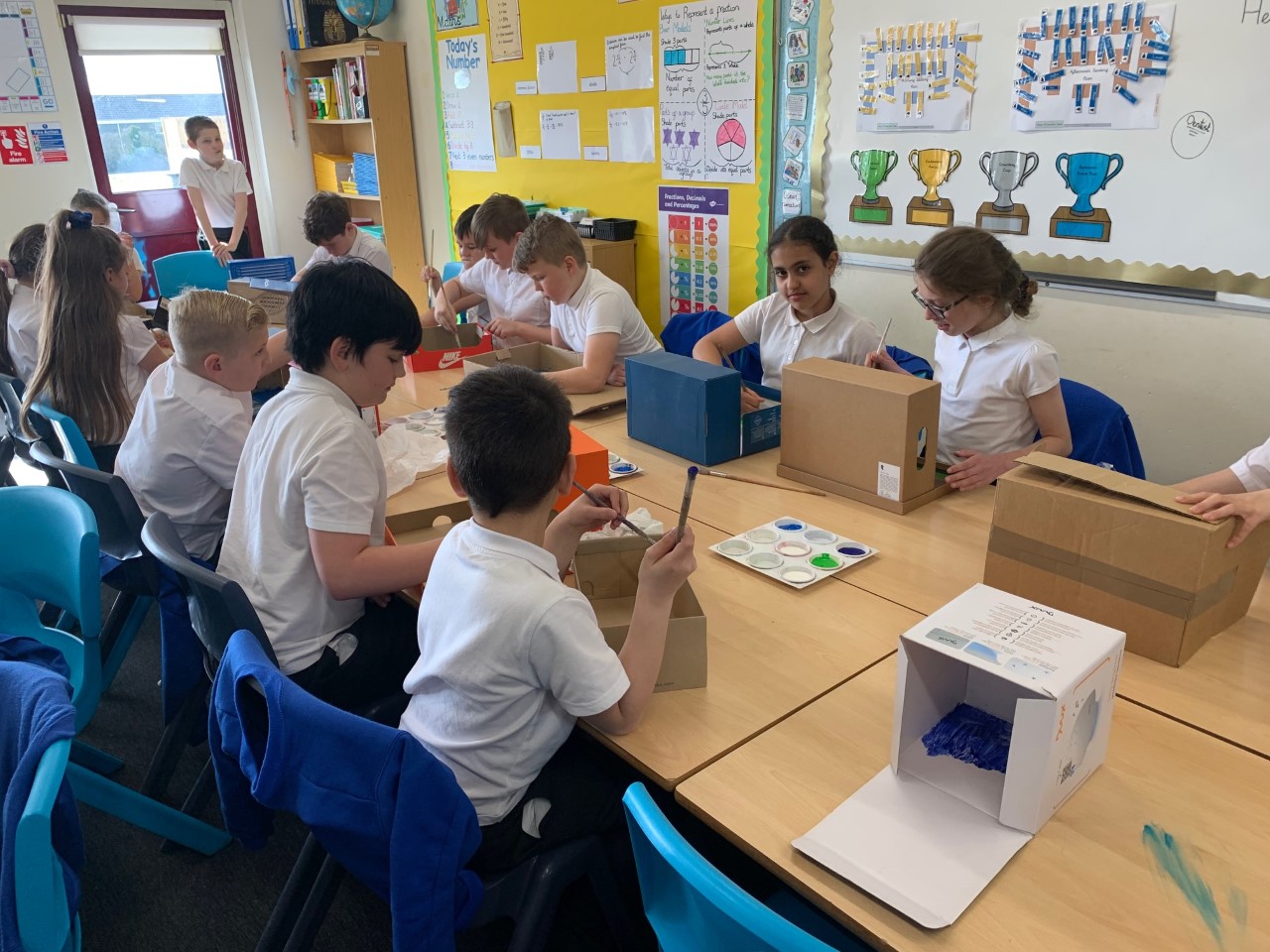
Ocean Literacy
The ocean is a dominant feature of the planet and makes life on Earth possible. Our aim was to develop our pupils as ‘ocean literate’ individuals who have an understanding and respect for the ocean and the life within it.
The seven key principles identified as ‘Ocean Literacy’ are largely covered within this project, with a key focus on the following:
The ocean and humans are inextricably interconnected.
The above principle is the primary focus of the project. Through the project activity, pupils become increasingly aware that human activity is the root source of the
ocean’s deterioration. Children may have a strong emotional reaction to this.
Perhaps feeling anger, or becoming motivated to do something. As a part of the project, children build a personal connection to the ocean and grow a love for it.
The ocean supports a great diversity of life and ecosystems.
The ocean is filled with countless species – all of which rely on the ocean to live. Children are fascinated by new and undiscovered species as they have a natural curiosity for the unknown. Because of this, children within this project are keen to ensure that the ocean is protected to ensure these species are protected and discovered.
The ocean made the Earth habitable.
As a part of the project, the children discuss climate change and sustainability. Recycling is a major topic of discussion after the initial workshop on plastics, as the sheer scale of plastic problem is likely to cause many of the children to reflect on their own use of the material.

Teaching and Learning Map
The plastic pollution project was formed around the idea that we must empower children to know that their actions can have a positive impact on their community and wider world. Children engaged well with the content of the project especially if they have experiences of visiting the seaside and seeing the problem first-hand. Where this is not the case, an aquarium visit or the use of VR experiences can provide an alternative experience that can engage pupils with the problem.
Understanding the Challenge
-
It is important that the children feel empowered and energised by the project to act themselves to address the plastic problem: that children feel they can make a difference.
-
Learning in the initial aquarium/zoo visit workshop that most plastic enters the ocean from land demonstrates that even in a residential area, miles from the ocean, human habits have an impact. This is an eye-opening fact that really has an impact on children. In the UK Pilot, following on from this session, several children then scoured their local area for litter.
-
It is important that the children understand the scale of the crisis. This can be demonstrated by using a small-scale
mock-up of an ocean basin as well as using comparative examples that can exemplify the issue in a more concrete way. For example: There are approximately 51 trillion microscopic pieces of plastic, weighing 269,000 tons in the ocean. That is roughly equivalent to 1,345 adult blue whales. And five-hundred times the number of stars in our galaxy.
Using digital tools to explore the problem:
Creative Communication of the problem: Ocean Dioramas
-
Children use creative, science-arts transdisciplinary approaches to communicate about the problem to younger children. In the Ocean Connections
UK Pilot 2, pupils created ocean dioramas (a three-dimensional
representation) to display plastic pollution in an engaging and eye-catching manner.
-
These dioramas are used as part of a display placed in school to educate younger children.
-
Within this diorama, ask the children to include ‘top tips’ that they discovered from their exploration phase using digital technologies.
-
The children are usually excited and encouraged that their work is used as a tool to explain a complex issue and help spread the word about
plastic pollution
Multimedia

Aquarium
Plastic Pollution Workshop
In this pilot, an aquarium visit launches the project. Visiting a local aquarium either virtually or face to face offers a different learning environment with access to educators with expertise about the Ocean and marine organisms from which pupils can benefit, complementary to their teachers’. Physical workshops based in aquaria enable access to materials and artefacts that schools are unlikely to have, providing a broader experience of the Ocean for pupils.
In the Ocean Connections pilot project, an online workshop introduced the pupils to the problem of plastic pollution. In the pilot based in the UK, pupils participated in two online activities. Similar activities could be conducted during a face to face aquarium visit
Meeting at the enclosure (20 minutes)
This virtual meeting enabled the pupils to appreciate that the educator was actually at the zoo - this was not an ordinary classroom lesson -
and to see and hear about the animals, and ask questions about their interests and ideas at the start of the project.
The Marine Plastic Pollution Workshop (45 minutes)
The workshop started with an explanation of the problems of plastic pollution (eg animal entanglement,
ingestion, longevity of plastics in the marine environment). Pupils were shown some real beach-found marine litter,
and asked to discuss in pairs about each item:
“What is it? How did it get into the sea? Tell me the story of how this item ended up where it was.” Three pairs shared their
narratives, with the educator highlighting that some items were disposed of intentionally, and some accidentally. This section worked
well online, with pupils producing similar answers to those in live sessions.
In the final segment of the workshop, nurdles (pre-production plastic pellets) were used to illustrate the problem of microplastics, with
pupils being asked to spot the nurdles amongst a sand tray on the webcam. Although fun, the 2 minute ‘nurdle-hunt’ used in live sessions
is even more engaging.
The session finished with current designs for machines to help clear up the plastic rubbish (eg Ocean CleanUp) and some simple
ideas of how pupils could help the ocean.

The Big Picture
This project aims to use digital, creative pedagogies to teach 9-10 year old pupils about the problem of Ocean Plastics and equip them with
an understanding that they have the potential to do something about it. The Ocean Literacy principle that forms the main focus of the project
is ‘humans and the ocean are inextricably linked’. This project draws on
creative pedagogies to teach about how pupils are able to act
individually, collaboratively or as part of a community to enact change, and take responsibility for environmental sustainability.
The project launches with a visit to a local aquarium (physical or virtual visit) where pupils participate in a workshop about the problem of plastic pollution; a novel and highly engaging experience for the pupils.
The key focus for this project draws on digital and creative pedagogies to develop pupils knowledge about the problem of plastic pollution whilst developing their potential for activism. The use of digital technology was particularly pertinent during the Ocean Connections pilot for this project as school trips had been suspended because of the ongoing pandemic. The project therefore uses a series of digital tools including apps and AR/VR experiences to enable pupils to understand and visualise the extent of plastic pollution in the Ocean and consider what human beings can do to address the problem. This is combined with the use of arts-based approaches that empower pupils to consider ways in which they can communicate the problem and make change both personally and as part of their local communities.
The topic of plastic pollution links well to several parts of the UK national curriculum. As a part of their Geography learning, children need to be able to recognise that human activity has an impact on the Earth. As a part of PSHEC (Personal, social, health education and Citizenship), KS2 children are expected to debate topical issues and constructively challenge ideas and systems that they disagree with. As a part of the Science curriculum, children have to an understanding of food chains and how human intervention/activity can have an impact.
Multimedia

Creative Pedagogies
Creative pedagogies are able to engage pupils’ with their learning emotionally,
physically and intellectually, and are closely related to future orientation,
change and therefore activism.
Creative pedagogies are therefore an effective way for
children to explore the issue of Ocean plastics in dialogue with others,
and express their thoughts and ideas using a range of methods drawn from science, geography and the arts.
Employing these methods can help the project to stand
out from the rest of the curriculum. The children’s questions (embodied dialogue) lead class discussions and research which meant the children felt responsible
for their learning (empowerment and agency).
Within this project, there is a lot of scope to use the arts in various ways. The use of drama and dance can be particularly engaging for primary-aged children.
In the UK Pilot example for Ocean Connections, we chose to create dioramas to educate a younger audience about plastic pollution. Had a pandemic not been present,
we would have offered the children an opportunity to create a theatrical performance that they could have performed in a school assembly.

Digital Technologies
Given that the ocean is difficult to explore, the use of digital technology enables educators to provide an ocean-related experience. This is particularly useful for schools which are further from the ocean.
Two useful apps/games can be used as a part of this project to foster curiosity into ocean literacy, though of course many others are also available
-
‘Deep Blue Dump’ is an interesting app that incorporates game play and facts on sustainability.
The premise of the game is to protect a baby turtle
from the human debris in the ocean. For each level passed, the children collect facts and top tips to protect the ocean. Using an app such as this enables
pupils to gather information that are then incorporated into their creative communications.
-
The Deep Sea is an online application that helps to establish children’s understanding of the vast depths of the ocean.
By scrolling down, you are able to see the depths at which various animals inhabit. Amongst the various species, interesting facts and images are linked.
This type of app is a really useful as it helps to demonstrate a complex idea in a visual and engaging way.
Links
Links to VR tool

Teacher Reflections
content

Design Material
content







